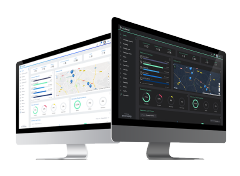
Connector types for electric vehicles
Electric vehicle | EV essentialsConnector types for electric vehicles: Type 1 or Yazaki, Type 2 or Mennekes, CHAdeMO, CCS or Combo and Schuko, a conventional plug.
When you acquire for the first time an electric car, you must be up to date about multiple aspects such as charging points and charging modes, as well as the different connector types for electric vehicles most used in the market.
So, in this post we want to tell you which are the most standardized and popular plug types for electric vehicles and what compatibility and capabilities they offer.
It is worth mentioning that, at this moment, there are different types of connectors depending on whether it’s an electric car or an electric motorcycle and according to each manufacturer. Until now there was no standard connector, but over time the trend is focused on standardizing both connector types for electric vehicles and charging points to avoid incompatibility problems and range anxiety.
Currently, the most relevant connectors are Type 1 or Yazaki and Type 2 or Mennekes. On the one hand, Type 2, traditionally for European use, is also being imposed in other areas. On the other hand, Type 1 is much more common in American and Asian markets.
Type 1 or Yazaki
As we have already said, it’s one of the most used connectors worldwide, especially in the American and Asian markets, where manufacturers have driven this type of charging points. To be more specific, it has been framed as the Japanese standard. However, it’s also accepted in Europe.
This connector, also called standard SAE J1772, has five terminals and is capable to support two different levels of charges in alternating current; one of 16 amps for normal or slow charge and another that reaches up to 80 amps for fast charge.
It’s compatible with most VE models sold in the United States and Japan.
Type 2 or Mennekes
Type 2 connector, also called Mennekes, is the European standard, although there are manufacturers who use it worldwide.
Mennekes connector, standard IEC 62196-2, emerged after the Yazaki and was approved as a standard at European level, but as we have mentioned before, it’s gaining a lot of ground to other connectors and its use is increasing by all types of manufacturers at Europe.
This connector has seven terminals and offers two levels of charging; through three-phase direct current at 63 amps and 44kW for Mode 3 or semi-fast charge and through alternating current on single phase at 16 amps and 3.7kW for Mode 2 or slow charge.
It’s compatible with almost all EV models sold in Europe. Even the Nissan Leaf, which has traditionally always used type 1, offers type 2 in the latest version of its successful model.
CHAdeMO
It’s the Japanese standard connector, widely used worldwide. It’s designed to perform Mode 4 fast charging using direct current and is capable to withstanding powers between 50kW and 400kW.
The major part of Japanese electric cars has this connector in order to enable fast charges. It has 10 terminals, which makes it the largest diameter connector in the current market.
CCS or Combo
CCS (Combined Charging System), also called Combo, it’s a connector that is trying to become the standard solution par excellence that allows both charging modes; slow and fast.
Europe and the United States chose to design an ingenious combined connector that, as the name indicates, is composed by two connectors, one that offers alternating current (AC) through Yazaki (in CCS type 1) or Mennekes (in CCS type 2) and another that offers direct current (DC) through two contacts or terminals. Therefore, it’s a connector that allows you to charge the vehicle in modes 2, 3 and 4 in one shot, simply a success!
With five terminals, the maximum power at which it can operate in alternating current is 44kW and up to 350kW in direct current.
Today, the major part of VE manufacturers include this type of connector in the vehicles they sell in Europe and the United States.
Schuko
Although technically is called Schuko, it’s the domestic and conventional plug that we all have in our homes. This is the European standard for the connection of electrical devices using single-phase low-voltage currents, such as household appliances, mobiles, etc.
Therefore, it’s a connector that will be useful for charging personal mobility vehicles such as motorcycles or electric skates, and even small electric cars such as quadracycles and the Twizy.
If we want to use it for charging electric cars, it will be necessary to have the relevant protections and limit the charge of the car to 10 or 14 amps’ maximum. On the contrary, we could have overheating problems and even cause some kind of fire.
About charging types & charging modes
We'll tell you the main differences between the different charging types in the following post in order to help you to be an expert in the electric vehicle world :)
And it's also important to know about the different charging modes that have been established in the electric vehicle industry in order to be up to date about all aspects that refer to the EV.
Other connectors
There are other connector types for electric cars that, for multiple reasons, have stopped being used in the market. A clear example would be the Type 3 connector, which was created in 2010 by EV Plug Alliance and allows a maximum power of 22kW. However, he has lost the battle against Type 2. Some EV models in France and Italy still conserve it.
In summary, for both 100% electric vehicles and plug-in hybrids is recommended to charge using Type 1 or Type 2 connectors in Mode 3 with a wall box or charging point, since it’s the safest, the most efficient and the fastest one (regardless of Mode 4 that allows charging at high power).
🚙 And how can Place to Plug help you?
Offering an end to end solution for the entire EV charging industry, whether if you are an EV driver, a developer, a business or an institution!



Leave a comment